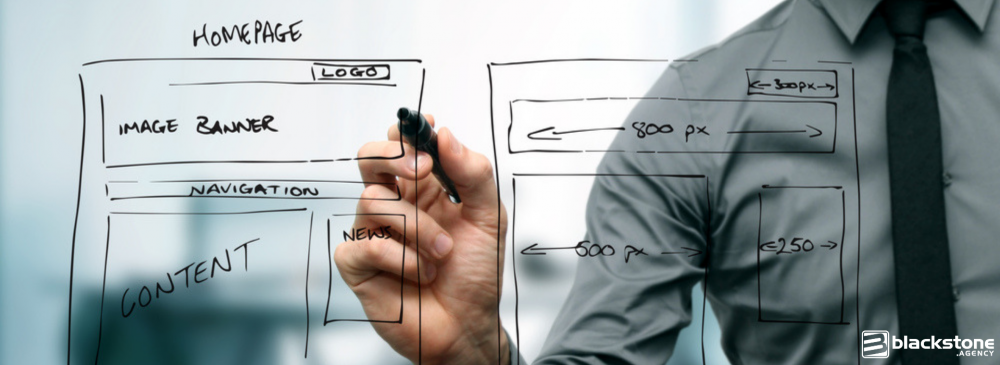Landing Pages Are Crucial for Your Marketing Strategy
Secure the attention of your potential customers with a good first impression on your website.
When doing business online, every aspect of your online presence needs to be carefully aligned to your overall marketing strategy. To gain leads and ultimately make conversions, you will need effective landing pages.
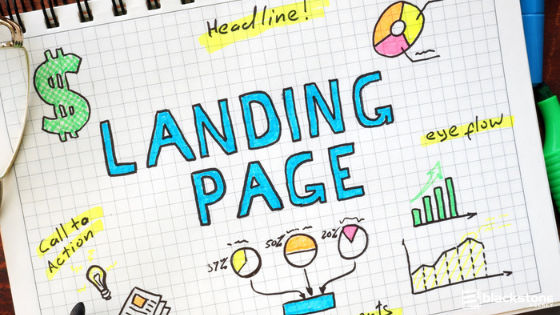
Although there are many aspects of your marketing effort that work to boost traffic and generate leads, there is sometimes too much emphasis placed in some areas, such as paid advertising, while other critical areas are overlooked. You could have the best advertising in the world, but if you don’t have the landing page that persuades and obtains buy-in, then you’re not going to see results.
At Blackstone Agency, we work with you to create compelling landing pages that can help grow your business.
Gain Attention with Eye-Catching Headlines

Your headline will determine whether your audience stays engaged or moves along to the competition. Are your headlines working for you, and are they eye-catching and relevant enough to keep your audience interested? A powerful headline will immediately draw a reader into your content. It will be to the point, relevant to what you’re offering, and convincing enough to persuade readers to learn more.
What Is Your Value Proposition?
If you’ve pulled the reader in with a compelling headline, then you need to continue delivering content that is of interest and offers something your reader needs. Whatever your niche is, you’re in business to serve wants and needs.

You must position your offering in a way that empathizes with what the audience is experiencing while offering satisfaction for something they desire or a solution to a problem they have.
Relating to your audience is essential. Building rapport through your content will help them determine that you understand their needs, and you’re the authority when it comes to satisfying those needs. This means you will never talk ‘at’ your audience; instead, you will converse with them naturally.
Testimonials, a short list of benefits and interesting case studies are all examples of ways you can relate to your audience and help develop a mutual understanding of the problem or desire while establishing trust in your brand.
Your Content Is Essential
A landing page needs to provide enough information to obtain buy-in but should not overload the reader with unnecessary information. Your marketing strategy should, therefore, have an emphasis on quality content. You should take great care to ensure that every word has meaning, the information is accurate, and there is no unnecessary fluff that adds nothing of value to your reader.

Taking the time to develop effective content, whether you do it yourself or engage with content marketing professionals, will help you to increase lead and conversion rates.
The Right Way to Use Images
Images can add visual appeal, but from a marketing standpoint, the information they provide is limited. Make sure you select images carefully and have a good balance of images and text on your landing page.

Images can be used for branding but also showcase what you’re trying to offer. If you’re offering a service rather than a product, then infographics are a great way to create visual impact while also providing valuable information.
Your Call to Action
You’ve developed strong content and a landing page with visual impact. Your readers like what they’re reading, and they see your value proposition as compelling.
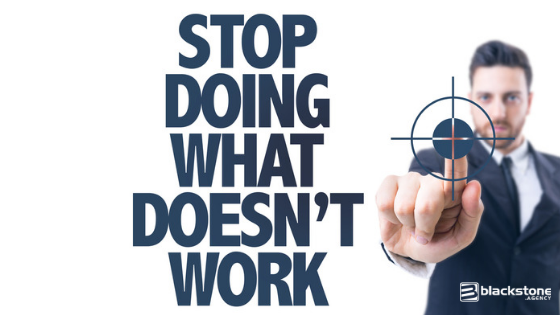
How do you take this opportunity and have the reader opt-in to the next stage? With a strong call to action, of course.
- Don’t underestimate the power of your opt-in button. It should be conspicuous, in contrast to the main copy, and clearly labeled. Text links or simple graphics are most effective.
- Relate back to the content in your call to action. Repeat the need or desire, reinforce why your offering is the best solution, and challenge the reader to take the next step by doing business with you.
Remember, by the time you reach your call to action, your reader should completely understand what it is that you have to offer and why it’s the best option on the market. Even with this, if you don’t challenge them to take action by clicking through, then all of your marketing strategies will go to waste.
Grow Your Revenue with Your Landing Pages
Don’t waste your time and financial investment by neglecting to develop effective landing pages. Your marketing strategy should be viewed holistically, with all of your advertising copy and content being designed to lead your audience to a sales funnel. A landing page is crunch time, where all of your efforts come together to bring in leads.

Highly informative, interesting, eye-catching and relevant landing pages are essential to ensure that you are able to increase revenue and grow your business.
Website Design for New Businesses: Never Look Small
New businesses are creating an online presence for their company on a daily basis, collectively launching thousands of new business websites. These businesses are all vying for online attention, each using various marketing tools to draw traffic to their sites. According to an October 2014 web survey hosted by Netcraft, there were over 1 billion websites online, with new sites constantly being added daily. With so many businesses promoting and marketing their websites, it’s imperative for any new business to stand out from its competition. Before addressing the digital marketing needs of the company with issues such as fresh SEO content and fast page loads, the website first needs to fulfill its initial job of clearly communicating what the business is and how it is relevant or provides value to its target audience.
Create a Functional Design
The foundation for any thriving online business begins with a thorough, comprehensive website design. Of course, the site should be appealing and attract visitors, but it should also be functional and easy to navigate. And because all businesses grow and develop at different speeds, a business’ website needs the flexibility to do the same so as not to lose traffic or customers over time. This is why quality website design and setup should be a priority for any new business.
Research studies report that over 94 percent of online users cite poor website design as the main reason they distrust certain brands. The goal of any new business is to gain traffic and convert potential customers; therefore, it is imperative that the site is strategically developed, highly functional and customized to the intricacies of the individual business’ consumer needs.
Avoid Templates
Businesses that are just starting out often go the route of using website template designs in an attempt to offset startup expenses and accelerate the site’s launch. While this may seemingly work at the outset, this route could easily interrupt web sales, damage brand reputation and possibly increase the business’ future web design costs.
Website templates are generally cookie cutter programs designed as “one size fits all” and offer very little (if any) customization built into their programs. Website design is an integral part of a business and is not an area where using template themes or designs and generic plugins are advised. These non-customized tools are built for the masses and are more susceptible to viruses and targeted hacks that can harm network systems and interrupt business operations.
Existing templates, widgets, and plugins can also become more costly and cumbersome to work with because of the need to constantly keep them updated and current as continuing developments take place. Also, if your site uses plugins or widgets that become discontinued, your new business website can suffer from unpredictable downtime, links or pages that become inoperable, not to mention traffic loss to the site as a result.
Customize for Growth
Businesses should build their web presence based on their desired status rather than their current state. This means customizing the site, its pages and content using the business plan and projected growth figures as a guide. It should also allow you, the website owner, the ability to make minimal changes as required while your business grows and develops over time. To achieve these fine points, it’s important to define a strategic blueprint for your business’ web design and online strategy, employing customizable and scalable solutions in lieu of website templates and one-size-fits-all programs.
In conclusion, a custom built website for your new business is the most cost-effective solution, saving both time and money in the long run. Custom web design will enable the site to easily scale as the new business grows and expands its product and service offering. Creating a unique brand presence online over a template used by thousands, assists with differentiating your brand from competitors and gives your new business the appearance of big brand appeal and credibility.
You Can’t Build A Business on A $300 Website
In a world gone digital, those with a secure foundation online succeed, and why building your house with hay won’t stand up to the competition.
In business there is a conversation that usually starts with, “I’ve been in business for a few years and I’m ready to take my business serious. I have money to invest and want to do it correctly because I know it’s going to cost to do it right and compete in my competitive market.” After a discussion with the customer about marketing and options, we usually send over a proposal that is well above the $300 mark. Three or four days usually pass and the email or phone call comes back with, “I’ve talked to a friend and he turned me onto a website that builds websites for under $300. I’m going to go that route instead of your agency.”
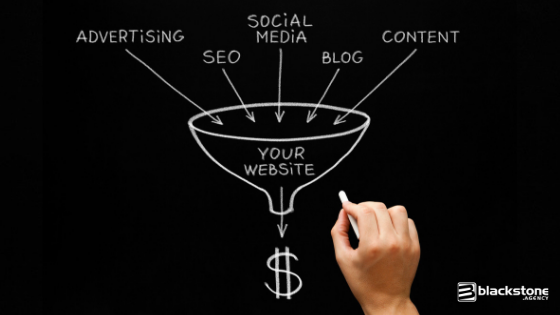
In this case, it is the customer’s right to look at the other options they have. But the bigger question is whether or not you were ever really serious about investing in your business. As the old saying goes, “Rome wasn’t built in a day.” It’s impossible to combine fast, professional and cheap when it comes to your website. You get what you pay for. Anyone who is actually serious in business will tell you that you cannot build a website for less than three hundred bucks. The reason is that there are actual expenses that affect the quality of the product you have.
I know that sounds like a rant, but really, it is a very profound principle that portrays how serious business owners or entrepreneurs are regarding their business. If you want to be successful, you must strive for perfection. I’m not saying you have to have an unlimited budget; I’m just saying do it right. My father always told me, do it right the first time; even if it costs you more money, it’ll save you headache, hassle and even more money in the end. The missing part of that is the lost revenue that is the result of poor marketing. Remember that first impressions are everything. Your first impression for a new client or customer only gets one shot, and you will never have a chance to get them again in most cases.
So what is the difference between a $300 website and a $3,000 website? Well, if you consider a small professional website takes over 30 hours to complete, you’re looking at the difference between a $10 an hour person and $100 an hour professional in a numbers perspective.
The Importance of Having a Professional Graphic Design

It takes time and costs money to create graphics for a website. You cannot simply copy and paste some images online and use them. This sets you up for a copyright complaint if you do. Additionally, if you use the free resources online, you are reusing images that won’t make your business stand out. Professional graphic design ensures that you have a visually stunning set of images that leaves a lasting impression with your customers when they visit your website. After all, would you rather have a plain website to do business with that is a jumbled mess with amateurish graphic design or one where the web design truly shines?
Strategic Calls to Action And Messaging
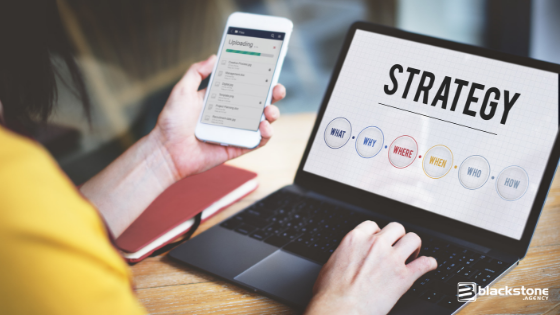
On a $300 website, you have no professional thought put into the website. There is no strategic planning, and all that has taken place is that a person threw together a website without any effort at all. That means while a basic $300 website can get you something assigned to a URL, you are left with nothing more than a hobby website when compared to the work of an actual professional.
In this case, think about a website you’ve been to for a business that looks like a high school student has thrown something together. It looks like a hobbyist created the space over a true professional, and in this case, that would be true. You’ll never find a true professional website for only $300.
Built Taking into Effect Search Engine Optimization
A website can be set up in a few hours. By the time it is done, you have the framework of what you need to successfully operate your website. The problem is that you aren’t going to have the Search Engine Optimization (SEO) on the page. SEO is a complicated process that takes time, and your average $300 website builder won’t take the time to make sure your website uses the latest approved techniques while following the guidelines of Google through their Panda, Penguin and Hummingbird updates. A professional web designer can take your website and ensure that it is optimized so that you have real results the moment that your website goes live. All it takes is a few simple online adjustments to things like links and your web design.
Instead, for the $300 you have a bare-bones unprofessional looking website that won’t have any traction online.
Technically Sound And Secure
Realistically, the $300 website will be a simple WordPress that incorporates a few plugins. In most cases, they have done nothing more than quickly changed a template and require you to update your version frequently. Eventually, these templates stop being updated and new security issues arise. In 2016 and beyond, you need to take your website security seriously, otherwise your website will be taken down by hackers.

When you pay a professional company, you don’t have to worry about someone hacking into your website because firewalls and other prevention tools are already in place to protect you. That way, you have some peace of mind that the website for your business will always be up and running when you need it the most. A lot of the inexpensive websites out there are designed with the same set of templates. This makes them look like a copy and paste job of every other website out there. While this is fine if you don’t care about innovation and standing out, it won’t leave a lasting impression with your customers. It also will not look professional, and people will question if doing business with your company is safe. Instead, you want to take the time to ensure that your website stands out in the sea of competition and drives the customer to finalize a sale with you over doing business with anyone else. That depends on having a unique design that is easy to use while being visually stunning. This combination is something that can only be done when you work with a professional web designer.
Built for Your Business Not Just Another Template
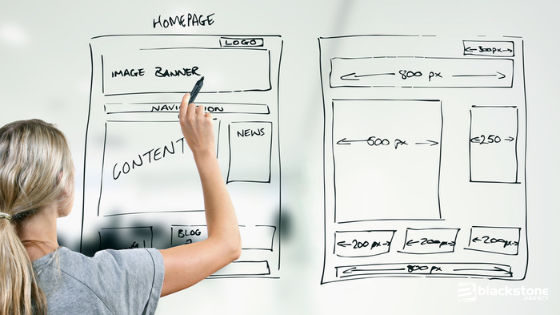
As you can see, a $300 website is not a realistic approach for anyone who is serious about their business. It makes you look like a hobbyist who has just tossed something up and prevents your website from being taken seriously in an already competitive market. Instead, take the time to work with a professional company who will go the extra mile and ensure that your business has everything it needs to be successful online, with fewer threats, and be a website that people notice and feel comfortable with thanks to the quality web design it has.
Create Online Forms that Engage and Convert
To your website visitors, online forms are like optional extra credit in school. If they are already passing a class, most people don’t want to spend time completing extra work. That extra credit only becomes attractive when they need the points to pass the class. Your visitors won’t look at your forms with interest unless it promises to help them achieve something of value to them. If they can find the information they need through your blog or the products they need through your store, they have little incentive to spend time filling out an optional form.
The solution is not to give up on forms altogether but to create engaging online forms that have value to your visitors. You start by being upfront about what they will receive in exchange for the information asked for in the form.
For instance, you may tell visitors that they can obtain more in-depth information not featured on your blog or website content if they sign up for your newsletter or that they can get discounts on future purchases by signing up for occasional email messages. Think about what benefit a visitor may gain from a specific form, and make sure they understand that benefit. Then place the form in a convenient location on your website and follow these additional tips:
- Only ask for the information you really need.
The more information a visitor must provide, the less likely they are to fill out an online form. Forms with a lot of fields look complicated and require a larger investment of time. Simplerforms are faster to fill out, so your visitors are more likely to consider the time investment worth the payoff they receive at the end. - Use terms that everyone can understand.
If your website is dedicated to a specific industry, don’t use industry lingo. You want to ensure that everyone inclined to fill out your form will understand what information you are requesting. When something is unclear, visitors will abandon the form before it is complete. - Design your forms to limit frustration over errors.
Have you ever gotten to the end of a long form only to be presented with a message that there were errors on the page? Going back to fix the error can double the time it takes to complete the form. This is often caused by not using dashes or other small mistakes. If you simplify your forms by accepting data in whatever manner your visitors want to enter it, you can eliminate this frustration and ensure your visitors stick around long enough to fully complete the process. - Customize your online forms to your user.
Use your analytics to determine what country most of your visitors come from, and then put that country at the top of your location dropdown list. Small things like that can simplify the form process so that more of your visitors make it to the end of the form.


